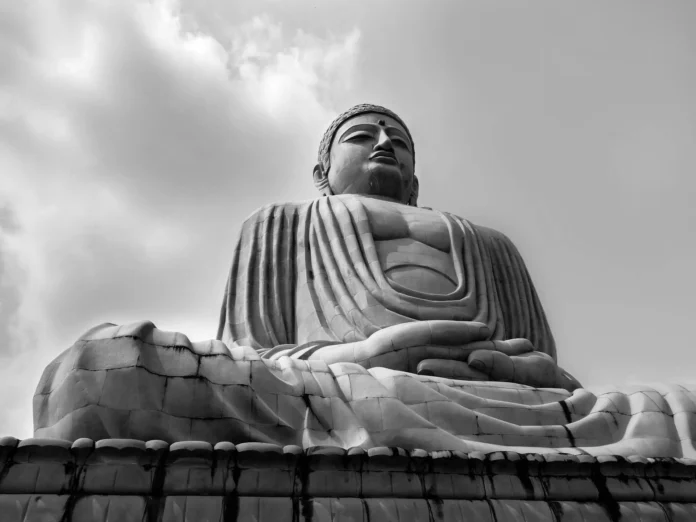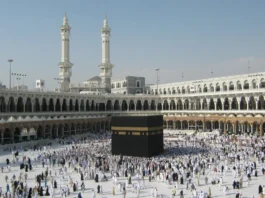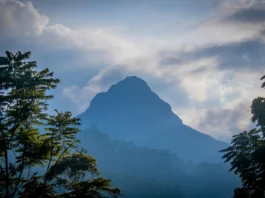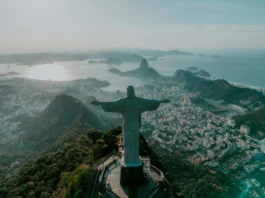“Where Silence Speaks and Awakening Begins“
In the quiet town of Bodh Gaya, nestled in the Indian state of Bihar, lies a place of profound spiritual significance—the spot where Siddhartha Gautama, a wandering ascetic, attained supreme enlightenment under a Bodhi tree over 2,500 years ago and became the Buddha. Revered by millions of Buddhists and seekers around the world, Bodh Gaya is more than a pilgrimage site—it is the spiritual heart of Buddhism, where inner transformation was born and where the timeless message of compassion, mindfulness, and liberation first radiated out into the world.
The story begins around the 6th century BCE, when Siddhartha, a prince from the Shakya clan, renounced his royal life in search of truth. After years of intense meditation and self-denial, he arrived in Gaya and sat beneath a peepal tree by the banks of the Niranjana River. There, with unwavering resolve, he meditated until he penetrated the nature of suffering, desire, and the path to liberation. When he arose, he was no longer just Siddhartha—he was the Buddha, “the Enlightened One.”
The exact spot where this awakening occurred is marked today by the Mahabodhi Temple Complex, a UNESCO World Heritage Site and one of the most important pilgrimage destinations in the world. At the heart of this sacred complex stands the Mahabodhi Temple, a soaring 55-meter (180-foot) spire constructed in the 5th to 6th centuries CE, though the original shrine dates back to Emperor Ashoka’s reign in the 3rd century BCE. The temple’s pyramidal structure, lotus motifs, and finely carved sandstone reliefs blend architectural grandeur with serene symbolism.
Behind the temple, surrounded by a stone railing and quiet reverence, grows a descendant of the original Bodhi Tree under which the Buddha meditated. The current tree is believed to be a direct offshoot of the tree taken to Sri Lanka by Emperor Ashoka’s daughter, Sanghamitta, and later replanted in Bodh Gaya. Pilgrims from all over the globe come to sit beneath its branches, chanting sutras, meditating in silence, or simply resting in its shade, seeking a personal moment of peace or insight.
Bodh Gaya today is a melting pot of cultures and Buddhist traditions. From Tibetan monks in crimson robes to Thai pilgrims in white garments, visitors of all nationalities and lineages gather here in shared reverence. Monasteries, temples, and meditation centers representing countries such as Japan, Bhutan, Myanmar, Vietnam, and China have been built around the town, creating a unique international spiritual village. Each monastery is an architectural jewel, reflecting the art and devotional style of its homeland, while also offering a space for contemplation and learning.
Among the most visited is the Tibetan Karma Temple, known for its golden Buddha statue and chanting of mantras, and the Japanese Nippon Temple, with its tranquil gardens and bronze figure of Buddha. The Thai Monastery stands out with its sloping roofs and intricate gilded facades, while the Royal Bhutanese Monastery displays vibrant murals and prayer wheels. These temples not only serve as places of worship but also foster intercultural exchange and unity among the Buddhist world.
Visitors to Bodh Gaya often engage in meditation retreats, Dharma teachings, and spiritual discussions. The International Meditation Centre, the Root Institute for Wisdom Culture, and the Tergar Monastery offer short and long-term programs, welcoming both seasoned practitioners and curious newcomers. The serene atmosphere, punctuated by the soft rustle of leaves and chanting of monks, creates an environment deeply conducive to introspection and transformation.
While the Mahabodhi Temple is the focal point, other nearby sites are equally rich in significance. The Animesh Lochan Chaitya, believed to be the place where Buddha spent the second week after enlightenment gazing at the Bodhi tree without blinking, evokes awe in its stillness. The Muchalinda Lake, where a serpent is said to have protected the Buddha from a storm during his meditation, is a peaceful water body flanked by sculptures. The Vajrasana or “Diamond Throne,” located at the base of the Bodhi Tree, is considered the actual spot of enlightenment and holds the deepest spiritual resonance for devotees.
Each year, Bodh Gaya hosts the Bodh Gaya International Dharma Assembly and the Kalachakra Initiation, drawing tens of thousands of devotees and teachings from some of the world’s leading Buddhist masters, including His Holiness the 14th Dalai Lama. During these gatherings, the town comes alive with sacred rituals, prayer flags, prostrating pilgrims, and the profound sound of the Dharma echoing through the air.
Despite its spiritual aura, Bodh Gaya is also a vibrant local town where daily life continues alongside devotion. Local artisans craft statues, prayer beads, and hand-painted thangkas, while street vendors offer traditional sweets, mangoes, and steaming cups of chai. The blend of sacred and secular creates a living landscape that is both deeply human and richly divine.
Efforts are continually made to preserve and protect this sacred site. UNESCO’s involvement has led to conservation projects, improved infrastructure, and educational outreach. However, challenges such as tourism pressure, environmental degradation, and commercialization require ongoing attention to maintain Bodh Gaya’s sanctity for future generations.
For spiritual travelers, a visit to Bodh Gaya is not just a journey through geography but through consciousness itself. Whether one follows the Buddhist path or not, the atmosphere invites all to pause, reflect, and reconnect with the deeper questions of life. The Bodhi Tree is not just a tree—it is a living symbol of awakening, reminding us that clarity, compassion, and liberation are possible for anyone who seeks them with sincerity.
In conclusion, Bodh Gaya stands as a sacred beacon of enlightenment, a site where history, spirituality, and human potential converge. Its silent stones and sacred soil continue to inspire millions to turn inward, to find peace amidst chaos, and to walk the path of wisdom. To visit Bodh Gaya is to stand where the Buddha once sat, to see what he saw, and perhaps, even for a fleeting moment, to feel what he felt—the profound stillness of awakening.




